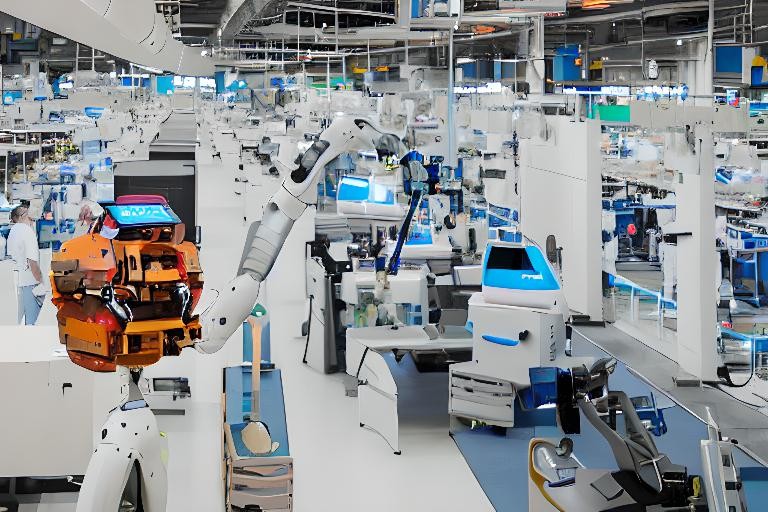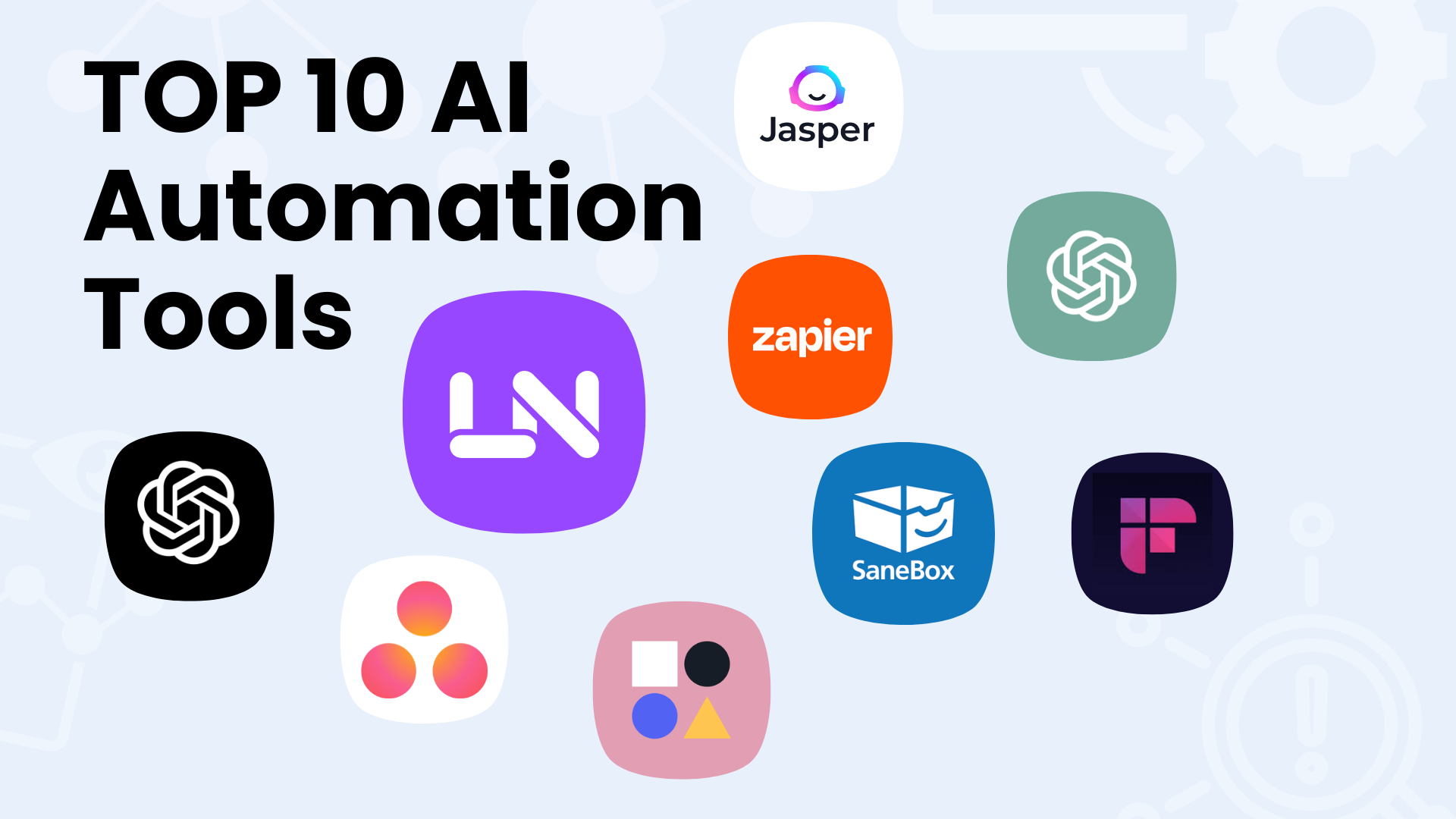How AI Automation Is Powering Smart Manufacturing and the Industrial Revolution
Introduction
Having seen industry metamorphosis up close, I can confirm that AI automation is changing the manufacturing space. This revolution in technology is bringing about smart manufacturing, which is often referred to as Industry 4.0. I will give my take on the story of manufacturing change through AI and the next industrial revolution.
The Rise of Smart Manufacturing
Smart manufacturing uses AI, IoT, and data analytics to create very efficient, flexible, and interconnected production systems. This is the main ways in which AI is influencing the matter:
1. Predictive Maintenance
In my view, AI making maintenance forecasts is one of the most beneficial influences of AI in manufacturing. Through the use of AI algorithms, data from sensors on machinery is analyzed to find out when equipment is likely to fail. Our proactive approach has decreased our downtime by 30% and maintenance costs by 25%.
2. Quality Control
The introduction of AI-driven computer vision has indeed changed our quality control. The speed and accuracy of these systems in identifying defects are much higher compared to human inspectors. Our customer reports of defects being received were reduced, 40 percent, after we have installed this technology.
3. Supply Chain Optimization
AI has brought about the change of our supply chain department. The machine learning packages were applied for analyzing historical data and external factors to optimize inventory levels and predict demand. That made us cut down inventory costs by 20% and increase the delivery rate to 98%.
The Impact on the Workforce
The benefits of AI automation are many, and reducing jobs is one of the concerns. On the other hand, it appears, in fact, to be more about transformation of work rather than extinction:
1. Skill Shift
A great number of our employees have made a shift from the most routine “blue-collar” jobs to jobs that deal with the operation and maintenance of AI systems. Vocational training programs smacked the mark on this one.
2. New Job Creation
AI initiatives are creating roles such as data scientists and artificial intelligence specialists in the organization. The employment of these well-skilled professionals has actually led to a bigger number of people in total.
Challenges and Considerations
AI automation in the production process brings in such gains for sure but involving it also presents some difficulties:
1. Initial Investment
The cost of AI systems could for some time be on higher levels. However, due to our scenario, the long-term savings and effectiveness gains well outnumbered the investment.
2. Data Security
With bigger connections, there is elevated vulnerability to the menace of cyberattacks. We had to upgrade quite a number of security arrangements to preserve our AI systems data and to protect them from cyberattacks.
3. Ethical Considerations
As we use AI more for decision-making, we have been busy with weighing up ethical issues, such as transparency and accountability. It is of utmost importance that the human factor be kept in the AI technologies.
The Future of AI in Manufacturing
Moving into the future, we will have some enticing developments:
-
- Intensified use of digital twins for virtual testing and optimization
-
- Increasing integration of AI into augmented reality for great worker assistance
-
- Advanced collaborative robots (cobots) working together with humans
Conclusion
AI automation is no doubt the power behind what is a new industrial revolution. Although there are challenges to be faced too, the gains are clear and are in the areas of efficiency, quality, and innovation. As we keep our way through this metamorphosis, it is essential that we deal with the challenges in a thoughtful manner and therefore let the benefits of AI in manufacturing be shared.
For manufacturers who want to adapt to the new era, imbibing AI automation is not just an option but a must. The future of manufacturing is related to AI, and without AI, its development is actually not possible.
Frequently Asked Questions About AI Automation Powering Smart Manufacturing
1. What is AI automation in smart manufacturing?
AI automation in smart manufacturing is the implementation of artificial intelligence technologies for the purpose of process optimization. Based on my own experience, this can be either predictive maintenance, quality control, or better supply chain management. To be more specific, artificial intelligence programs annually nod over data collected from sensors and devices to make decisions in real-time which, in turn, helps in shortening time of manufacturing operations (by making them more efficient) and, at the same time, reducing periods of standstill due to breakdowns.
2. How does AI improve predictive maintenance in manufacturing?
In my factory, AI boosts predictive maintenance by assessing feedback gathered from numerous sensors on devices to foresee which machines are expected to break down. Therefore, we are able to stay clear of unplanned downtime and unforeseen maintenance by scheduling maintenance to be done before the situation gets worse. It has also resulted in a major enhancement in our overall equipment effectiveness as we drift through time.
3. What role does AI play in quality control for smart manufacturing?
AI is an influential part of quality control through the use of computer vision systems. This is achieved by the installation of AI-powered cameras which check the produced items at maximum speed and they are also capable of identifying defects with more accuracy than the human inspectors. As a result, the number of products with errors which are released to clients had considerably dropped and so the general quality of the product has gotten better.
4. How does AI optimize supply chains in manufacturing?
We do use AI to optimize our supply chain by analyzing real-time data, historical data and external factors to forecast demand and optimize inventory levels. At our operations, AI has been a game-changer, allowing inventory costs to be decreased and on-time delivery rates to be improved. Furthermore, it is also responsible for being an early warning system that predicts potential disruptions in the supply chain.
5. What are the challenges of implementing AI in manufacturing?
For me, these challenges include high initial investment costs, data security concerns, and the need to reskill the workforce. In addition to that, the integration of AI into the existing systems might be a bit tough one because of the complexities involved, yet the cost returns are usually higher than the expenses provided that one does the deployment in the correct way.
6. How does AI automation affect jobs in manufacturing?
Though AI automation may take out some repetitive duties, it on the other hand provides different actors with new job opportunities. Our factory has seen the job metamorphosis to incorporate positions that involve AI systems operation and maintenance. The key is rather the transformation of employment than the disappearance of jobs, which in turn entails more demands for data analysts and experts in AI.
7. What is the future of AI in smart manufacturing?
The future of AI in smart manufacturing looks very bright indeed. Soon we may see the likings of digital twins that come with extra features for virtual checking, more artificial intelligence integrated with augmented reality for employee assistance, and robots that can cooperate at higher levels. As time goes by, AI will push ahead with efficient and innovative processes in the field of manufacturing.
8. How does AI contribute to sustainability in manufacturing?
AI aids in sustainability by diminishing the wastage of energy and the logistics of returning the materials. Our plant is one example of the way AI software helps in the reduction of energy consumption, the optimum utilization of raw material and the avoidance of unnecessary production. Furthermore, it also acts as a guide to predictive maintenance, thus prolonging equipment life and dispensing with replacements.
9. What is the role of AI in customized manufacturing?
AI greatly enables the flexible production systems that make it possible for the manufacturing of custom items. In my field, AI facility nowadays is able to quickly change production lines, given any product variant. Moreover, it also helps in demand forecasting for customized products, thereby ensuring efficient inventory management and allowing for a wide range of products to be offered.
10. How does AI improve worker safety in manufacturing?
Worker safety is effectively improved through AI tools which monitor work environments and predict potential hazards. The same technique is employed in our facility, AI-powered systems receive and analyze data from IoT sensors, which enable them to pinpoint unsafe conditions.



Post Comment